Persimmon Tree Not Fruiting: Reasons A Persimmon Tree Has No Flowers Or Fruit
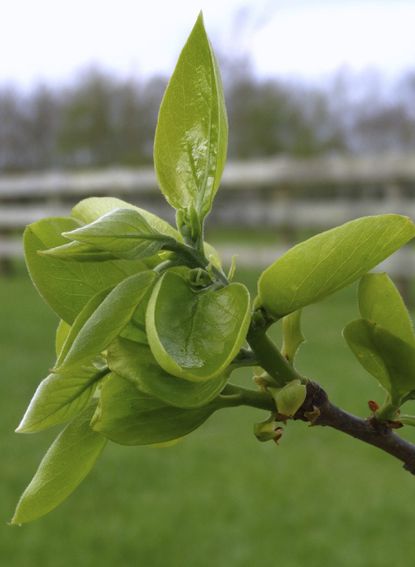
If you live in one of the warmer regions of the United States, perhaps you are lucky enough to have a persimmon tree in your garden. Not so lucky if your persimmon tree is not fruiting. What could be the reason for no fruit on a persimmon tree, and is there a remedy for non-blooming persimmon trees?
Help, My Persimmon Tree is Not Bearing Fruit!
Before attacking the reason behind a persimmon tree that isn't bearing fruit, it’s a wise idea to know a little about the proper planting of the tree. First of all, persimmons are only rarely self-pollinating, as each tree bears only male or female flowers. The exceptions are some of the oriental varieties, which are capable of producing fruit from each gender. Depending upon the varietal, you may need to plant two or more trees. Next, persimmon trees are sensitive to cold; temperatures that dip below 10 degrees F. (-17 C.) can damage the tree and any tender buds. They grow best in USDA growing zones 7 to 10 and will go dormant in the winter months. Persimmons also don’t do well in ultra-sweltering hot, desert-like conditions. Plant the tree in an area with good drainage, as standing water has an adverse effect on fruit production. Plant the trees 20 feet (6 m.) apart or so; the trees will attain heights of between 20 to 30 feet (6-9 m.). Persimmons like mildly acidic soil of around 6.5 to 7.5 pH. Cut the tree down to about 3 feet (1 m.) at planting and continue to prune for the first few years to maintain a vase shape. Use a 10-10-10 or 16-16-16 fertilizer in February or March. Keep the trees watered, especially during spring into the fall. Keep in mind that healthy trees grow up to a foot (31 cm.) a year but can take up to seven to ten years to produce fruit, so be patient.
Persimmon Tree Has No Flowers
If your persimmon tree has no flowers, don’t despair. When the tree blooms for the first time and when it flowers each season varies depending upon the variety, whether it was grown from seed or grafted and local weather conditions. Oriental persimmons bloom after five years but do not bear fruit until after seven years. Grafted trees bloom within two to three years. American persimmon may take several years to blossom and still not fruit for up to ten years. Both American and Oriental persimmons have alternate year blooming and fruiting. This means that you will get a large crop of small fruit one year and in the successive year, a small crop of larger fruit. Both varieties bloom in the late spring but the actual timing is dependent upon the weather which may also account for non-blooming persimmon trees. Occasionally a lack of phosphorus may be responsible for non-blooming. This can be remedied by adding some bone meal to the soil around your tree.
Reasons for No Fruit on a Persimmon Tree
So, to recap, a persimmon tree that isn't blooming could be due to a number of factors. Does it need a pollinating buddy? Perhaps you need to plant a tree of the opposite sex. Does the plant have adequate irrigation and nutrition? Overwatering will also affect blossom set. What type of tree is it? Different varieties bloom and fruit at different times and some take longer to mature and fruit than others. Also, has the tree been damaged at the grafting point? Sometimes it takes many years for the tree to recover from damage of any kind, if at all. If this is the final answer and you want a fruiting plant, it might be a good idea to dig it out and replant. Or replant in a different area and enjoy the beautiful foliage and shape of the persimmon as a specimen and shade tree.
Gardening tips, videos, info and more delivered right to your inbox!
Sign up for the Gardening Know How newsletter today and receive a free download of our DIY eBook "Bring Your Garden Indoors: 13 DIY Projects For Fall And Winter".

Amy Grant has been gardening for 30 years and writing for 15. A professional chef and caterer, Amy's area of expertise is culinary gardening.
-
 Elegant Exotics: 8 Beautiful Amaryllis Varieties That Will Brighten Any Holiday Display
Elegant Exotics: 8 Beautiful Amaryllis Varieties That Will Brighten Any Holiday DisplayWhether red, pink, white or variegated, the right amaryllis varieties can enhance any living space, especially during the holidays. We round up eight of the most exquisite
By Bonnie L. Grant
-
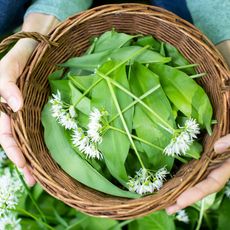 Forage For Herbs: 7 Tasty And Safe Wild Herbs To Pick Close To Your Own Backyard
Forage For Herbs: 7 Tasty And Safe Wild Herbs To Pick Close To Your Own BackyardIn addition to growing your own herbal staples, did you know there are several wild options out there that are safe and tasty – and free? Try foraging these 7 wild herbs
By Amy Grant
-
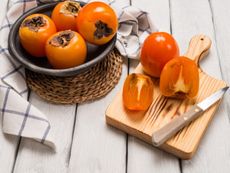 Cooking With Persimmons
Cooking With PersimmonsWant to use persimmons in the kitchen? Click here to learn how to harvest and prepare this fall favorite fruit.
By Amy Grant
-
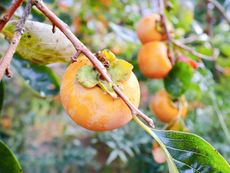 Growing Persimmons In Pots: How To Grow A Persimmon Tree In A Pot
Growing Persimmons In Pots: How To Grow A Persimmon Tree In A PotContainer growing works with many types of fruit trees including persimmon trees. And planting persimmon trees in pots can solve a lot of problems. Read on for more details about how to grow a persimmon tree in a pot on the patio.
By Teo Spengler
-
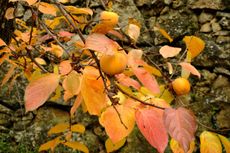 Persimmon Leaf Drop – Why Is Persimmon Tree Losing Leaves
Persimmon Leaf Drop – Why Is Persimmon Tree Losing LeavesA popular tree for home orchards is persimmon trees. These delightful, little trees suffer few serious diseases or pests and are relatively easy to care for. However, if you notice your trees losing leaves, there could be a few reasons behind the cause. Learn more here.
By Teo Spengler
-
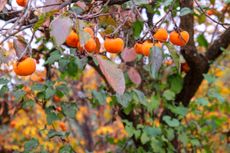 Fertilizing Persimmon Trees: Learn About Feeding A Persimmon Fruit Tree
Fertilizing Persimmon Trees: Learn About Feeding A Persimmon Fruit TreeHow much fertilizer does a persimmon tree need? The rules for fertilizing persimmon trees are a little different than those for other fruit trees and experts differ on the need for persimmon fertilizer. Click here for more information on persimmon tree feeding.
By Teo Spengler
-
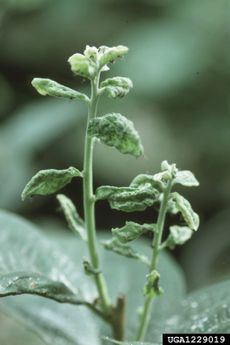 Curled Persimmon Leaves – Why Persimmon Leaves Are Curling
Curled Persimmon Leaves – Why Persimmon Leaves Are CurlingAlthough persimmon trees are generally durable and easy to grow, persimmon leaf curl is an indication that something isn’t quite right. If you’ve noticed curled persimmon leaves, careful troubleshooting is in order. Find reasons for curling leaves on persimmons here.
By Mary H. Dyer
-
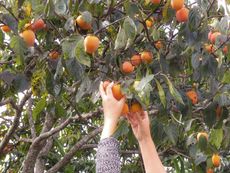 When Are Persimmons Ripe: Learn How To Harvest Persimmons
When Are Persimmons Ripe: Learn How To Harvest PersimmonsWhen they are less than perfectly ripe, they are terribly bitter, so knowing when to pick persimmons at their peak is essential. But how do you know when persimmons are ripe? Click this article to find out about harvesting persimmon fruit.
By Amy Grant
-
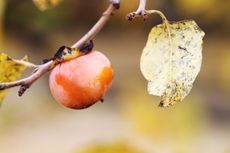 Persimmon Tree Diseases: Troubleshooting Diseases In Persimmon Trees
Persimmon Tree Diseases: Troubleshooting Diseases In Persimmon TreesPersimmons have no serious insect or disease problems, so there is no need to spray regularly. That doesn't mean that your tree won't occasionally need help, however. Click here for information about diseases in persimmon trees.
By Teo Spengler
-
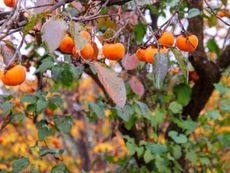 American Persimmon Tree Facts – Tips On Growing American Persimmons
American Persimmon Tree Facts – Tips On Growing American PersimmonsAmerican persimmons aren't as popular as their Asian cousins, but many people think they're tastier. Click for more.
By Teo Spengler